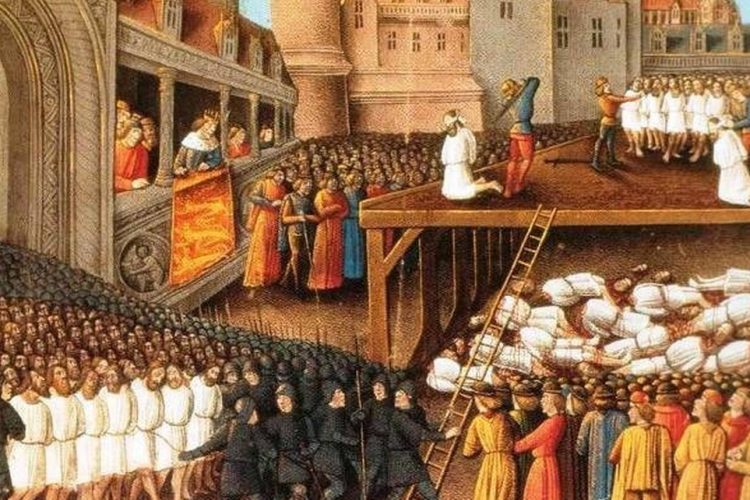A Death in the Venetian Quarter is the third in the Fools’ Guild series of novels by Alan Gordon. His first, Thirteenth Night, continues the plot of Shakespeare’s Twelfth Night by following Feste on his adventures—Feste, the former fool to Countess Olivia, has eloped with Lady Viola and apprenticed her in the art of jesting.
The action begins in Constantinople, where the clown couple and several other members of the Fools’ Guild—something between a jesters’ trade union and an intelligence network that operates behind the scene to avert geopolitical disaster—have set up shop in Constantinople. There, the couple has found employment at the imperial court, which allows it to earn their keep and to keep the Guild apprised of major happenings within Byzantium. Their timing is felicitous, as a powerful Venetian fleet has just anchored offshore, packed to the gunwales with bloodthirsty knights bent on enriching themselves at the city’s expense. These are the warriors of the Fourth Crusade, the expedition that will go on to brutally sack Constantinople.
Things are meanwhile tense within the city. No one is sure how far they can trust the resident Venetian merchants, whose compatriots are menacingly parked outside the walls. Feste is called upon by one of the emperor’s ministers to investigate the murder of a silk merchant in the Venetian Quarter, their trade colony inside Constantinople—a city within a city. The murdered man happens to have been the Byzantines’ most valuable informant among the Venetians, leaving the court dangerously in the dark. Feste and his companions are forced to match wits with a conspiracy of Venetians, whose intelligence network seems to be every bit as savvy as the Fools’ Guild.
Gordon approaches historical writing with a light touch. The events, places, and major figures create a historically-faithful framework within which he freely weaves his story. He does not concern himself overmuch with the particularities of life in 13th-century Constantinople, preferring plot to portraiture. The only anachronisms that ever grate are occasional instances of the protagonist’s thoroughly modern worldview expressed in a too-modern tone.
Fortunately, the tone is also light throughout. The book is filled with wordplay (beginning with the title, a play on Thomas Mann’s novel). It has all the dramatic flair of the theater, as if the book itself is a performance—it is no surprise to discover that the author also writes musicals. In this, Gordon is very faithful to Shakespeare’s broad comedy: puns, double-entendres, and clever turns of phrase stack up on one another, matching the comic absurdity of a plot driven by clowns. This is relieved by the ordinary dialogue, which is flat and pedestrian, serving more to advance the plot than adorn it. In this sense, it reads somewhat like juvenile fiction written for intelligent and curious children, which is the perfect tone for such a fast-moving and light-hearted novel.
All in all, A Death in the Venetian Quarter is an entertaining mystery that gives enough of a taste of the past to be satisfying to anyone with a love of history. The device of the Fools’ Guild is a clever one, focusing on characters living on the margin of events, who can easily flit unnoticed through the gaps in the chronicles and the shadows cast by the grander figures of history. This gives the author broad space to create an original story without taking dramatic liberties with the past.
You can order A Death in the Venetian Quarter in paperback or Kindle here.
The header image is an illustration of the Massacre of the Latins, the 1182 slaughter of all Venetians, Genoese, and Pisans living in Constantinople in a swell of popular resentment. This contributed to worsening relations between East and West, and indirectly contributed to the savagery of the Fourth Crusade.

